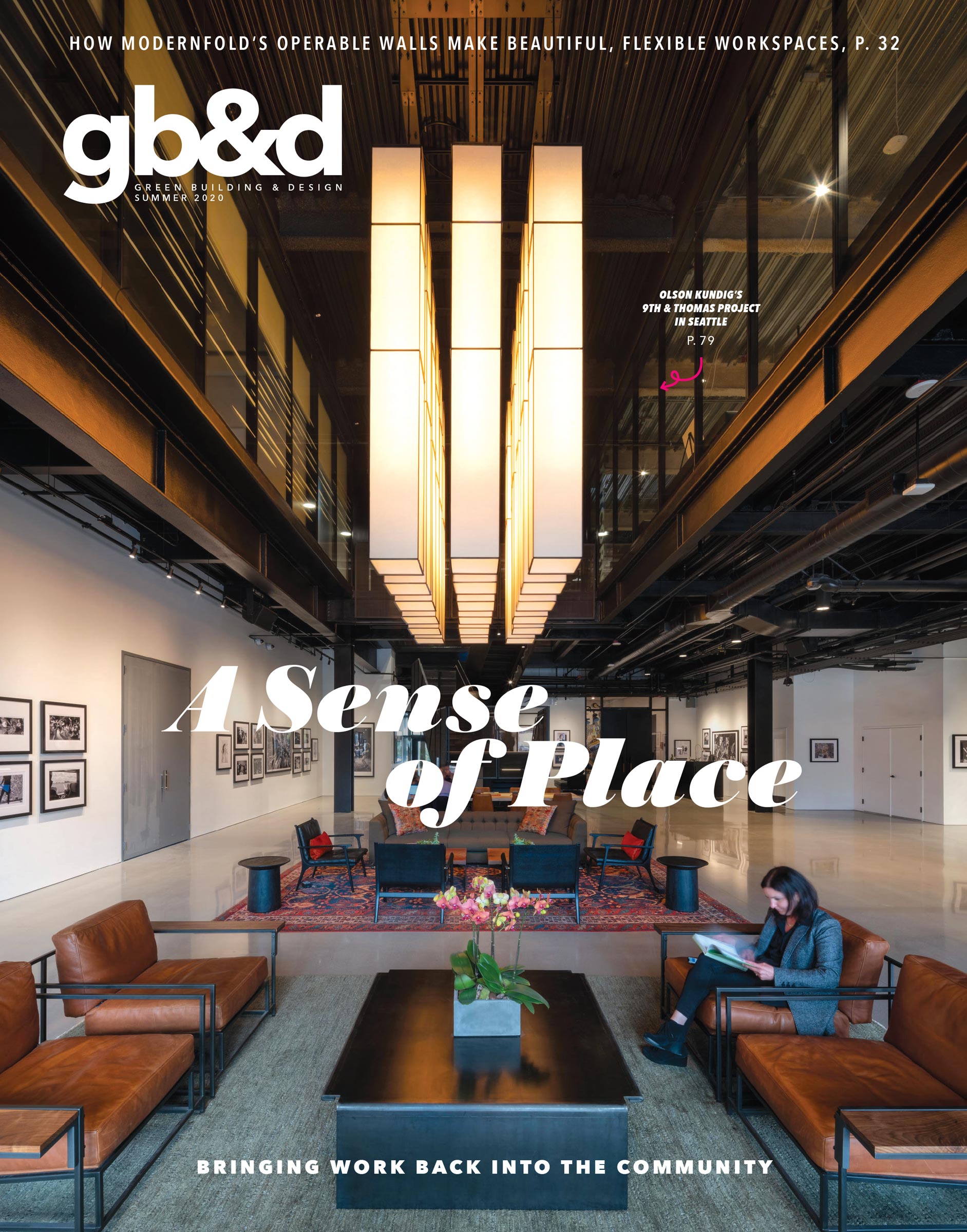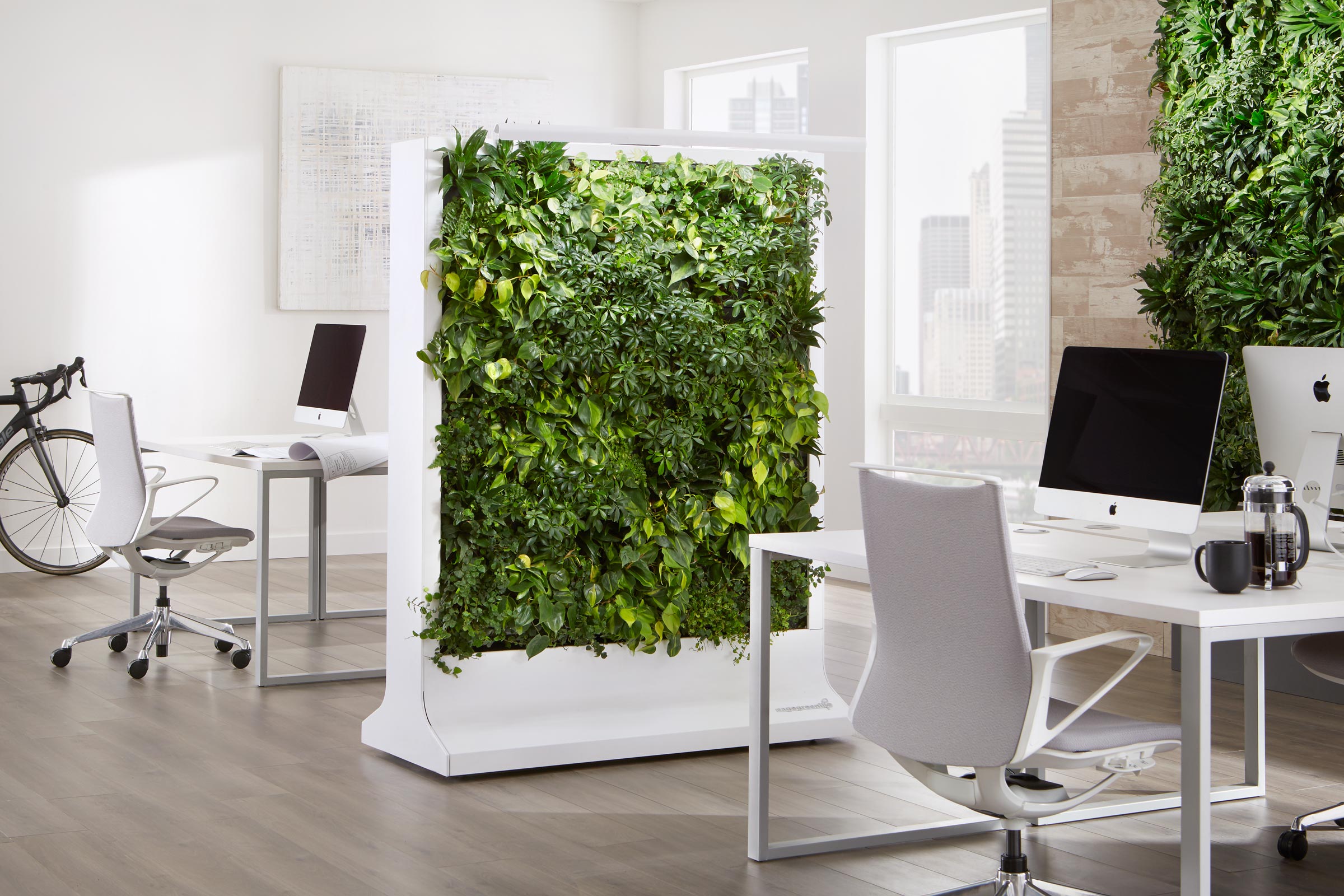
Sagegreenlife is known for its biophilic solutions, which bring life into the workplace. Photo courtesy of Sagegreenlife and Steelcase
Instead of approaching biophilic design with simple potted plants like many other companies do, Sagegreenlife grows leafy plants and flowers of all varieties in four expansive greenhouses across the US. “The biggest way to make a difference and change communities is by integrating these into the built environment inside and outside,” says Darren Mende, COO. The Chicago-based company grows its plants for living walls inside Biotiles made of Rockwool—essentially melted down, layered basalt rock. Stone fibers prevent plants from losing their composition and allow roots to take hold, decreasing the chance plants will die. Because the roots aren’t constrained on the back of the tile, they are easily replaced, though they’ll often live their natural lifespans of up to nine years. When a living wall is ready for install, Biotiles are inserted into a panel box and backed with layers of watering and drainage, a waterproof board, and support beams. Here’s how and why you should consider living walls for your next project.
Consider Your Space
“There’s lots of data on the physical sense of well-being: lower cortisol, better attention, reduced turnover,” Mende says of indoor walls in workspaces. They’re also great for absorbing sound in buildings with open floor plans. Sagegreenlife recently installed a 700-square-foot wall in a common lounge of Chicago’s Franklin Building for employees who want to stop and share coffee or have a meeting; their experience is enhanced by more than 4,000 plants around them. Besides earning wellness credits for buildings, plant walls often help spaces earn LEED credits. Outdoor walls can absorb pollution and carbon dioxide as well as mitigate heat traps. “That gives cities alternatives that aren’t controversial. We may not solve the problem, but we can mitigate the problem in a way that makes our communities more beautiful,” Mende says. “You get LEED credits, you get wellness credits, you make your environment healthier, and you’re using natural materials.”
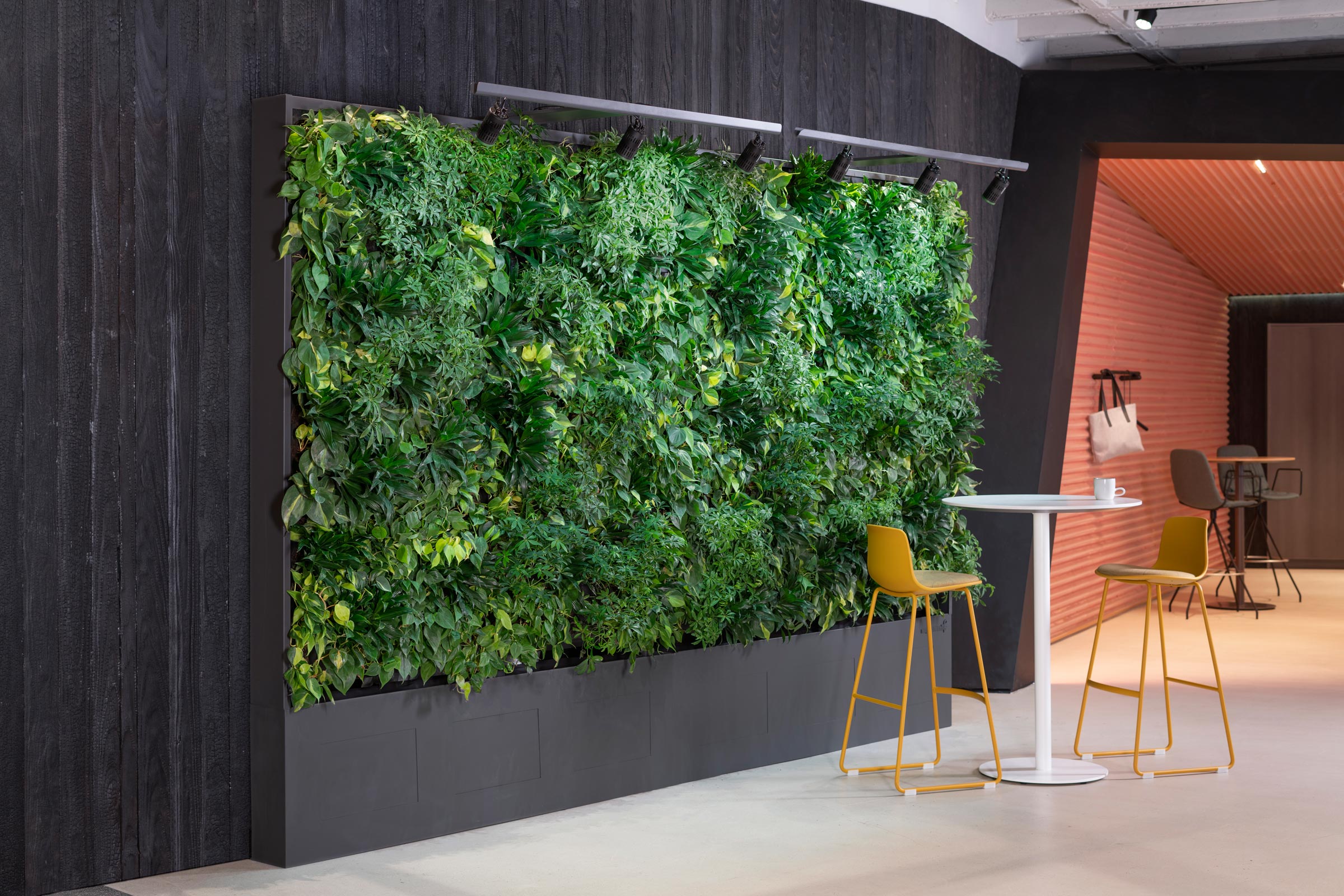
Sagegreenlife’s indoor walls have less than 2% plant loss. Their outdoor walls experience 5 to 7% compared to the industry’s 30 to 50%. Photo courtesy of Steelcase
Think About the Occupants
Sagegreenlife prides themselves on their larger projects. Last year they installed a 30-by-30-foot wall of more than 5,000 plants in a Washington University hall. It includes 10 species of waxy, durable plants like philodendron. “I think it’s going to change the way people look at the possibilities. That’s where we are in the industry, as there’s still very little awareness of what you can do with these walls,” Mende says of how the public typically perceives these projects. “The bigger, more spectacular ones that we do, they open up the possibilities in a way that helps drive awareness and future growth.” Though urban planners and developers have been aware of biophilic design for years, the concept is fairly new to the general public, who often associates these kinds of projects with hefty costs. But Sagegreenlife helps choose the right size and design for hospitality, offices, and stores across the country, so they can all feel a little more like gardens.
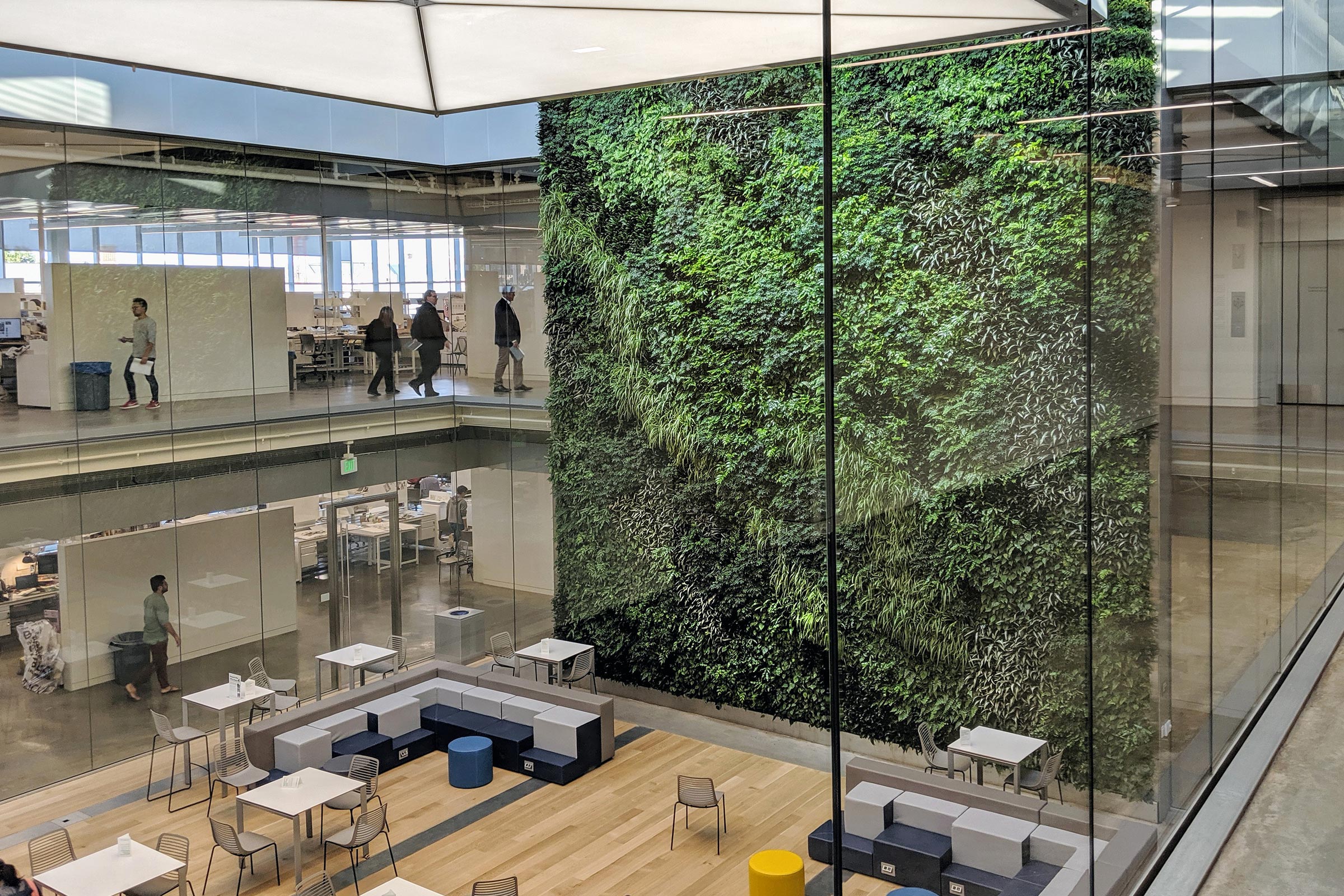
These living walls add beauty and wellness to offices, universities, restaurants, and more all across North America. Photo courtesy of Sagegreenlife
Connect People with Nature
Because each of Sagegreenlife’s tiles can contain 16 plants of almost any type, even a small installation creates a better environment to connect people with the natural world around them. “There’s an innate need to be exposed to nature,” Mende says. “If you can bring that back into any one of these environments and make that space better, it’s such a no-brainer.” For example, the leafy wall in the busy Los Angeles Football Club only improves patrons’ experiences, bringing life into the space. Indoor areas like this one, which often have low light, are perfect for Dracaena compacta and Creeping Fig plants. Both are included in Sagegreenlife’s tropical plant palette, designed to bring people back to nature with plant walls that are simultaneously beautiful and easy to maintain. “I think what we do is inherently good,” Mende says. “That’s what we want to continue to focus on as part of this company.”
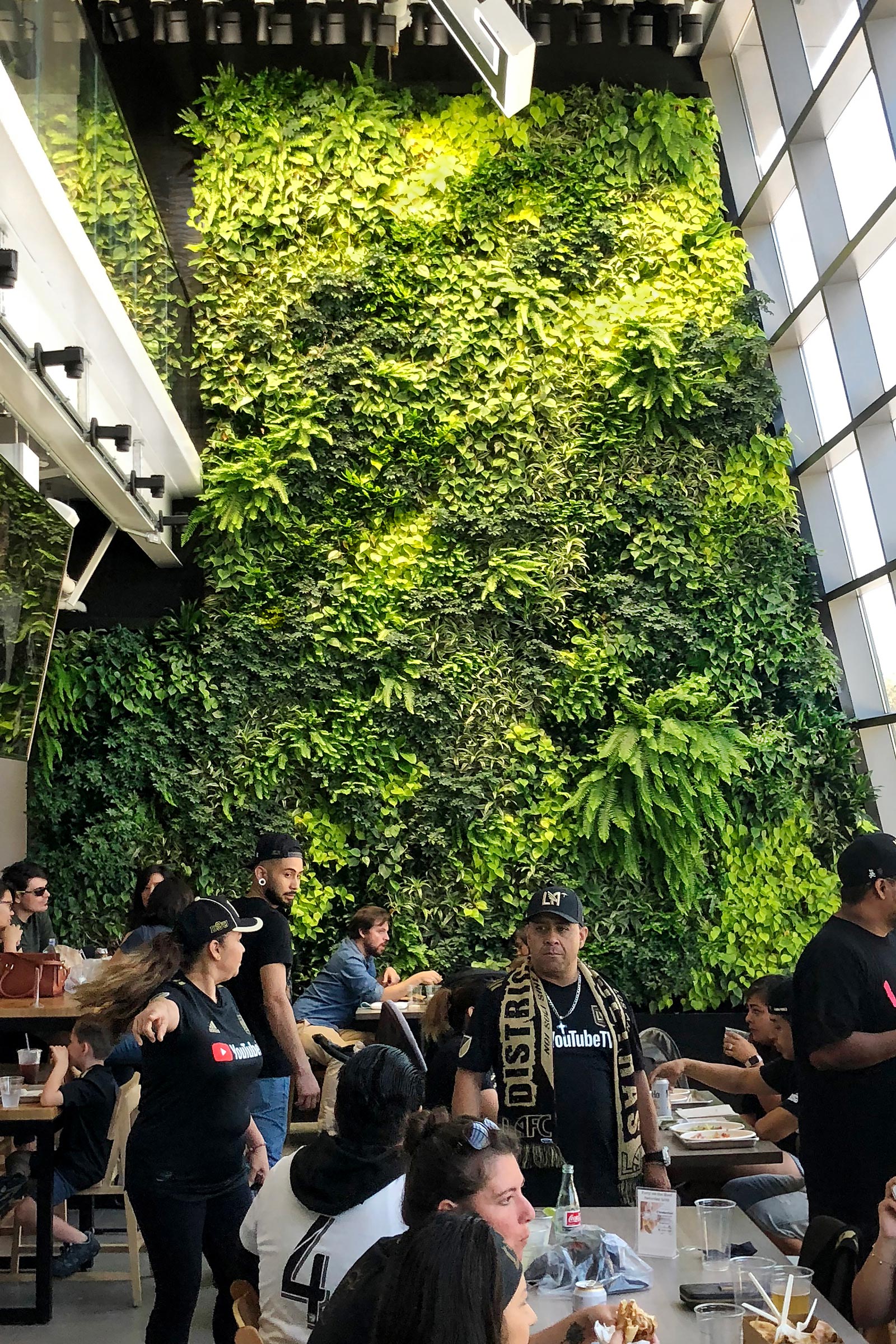
Aside from installation, Sagegreenlife offers plant wall maintenance and remotely monitors their creations 24 hours a day. Photo courtesy of sagegreenlife
Have Fun with It
Indoor or outdoor, the plant tiles’ Rockwool backing provides flexibility. Because it doesn’t have soil and it’s very porous, it can hold as much as 15 times more water than soil. It also naturally inhibits pests, mold, and root rot, according to the experts at Sagegreenlife. Rockwool evenly distributes water and nutrients and insulates well in colder outdoor spaces, too. For every space, Sagegreenlife considers how plants will age as well. Some clients want herb walls, which Mende warns can quickly become bushy and require more trimming. On the other hand, Boston’s Museum of Science wanted a clean, colorful look. After working together to decide what plant pallet and design works best for the client and their space, Sagegreenlife discusses the best lighting and irrigation options before installation.
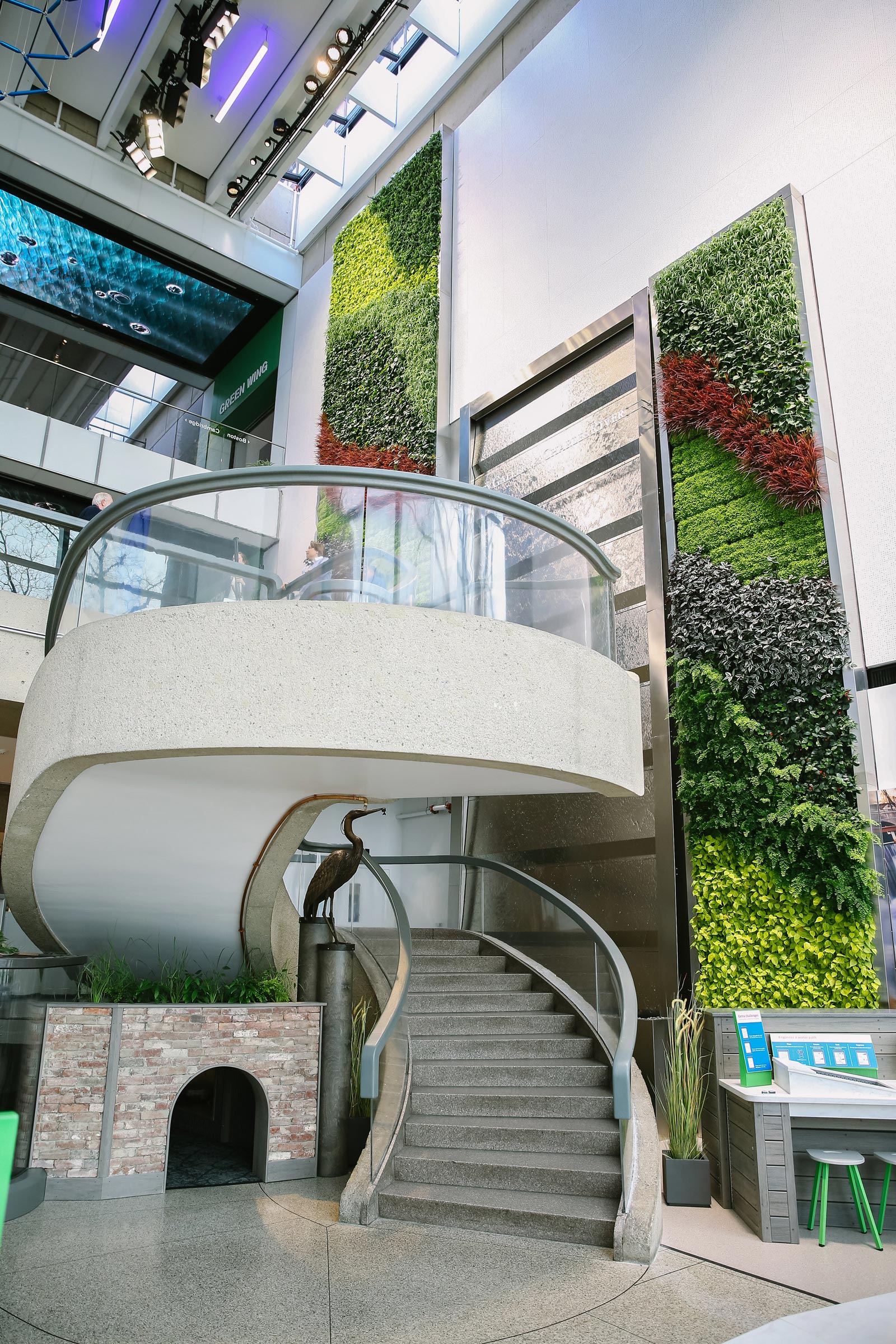
This Boston museum shows how adding colorful living walls from Sagegreenlife can add life to an already vibrant cultural institution. Photo courtesy of sagegreenlife

